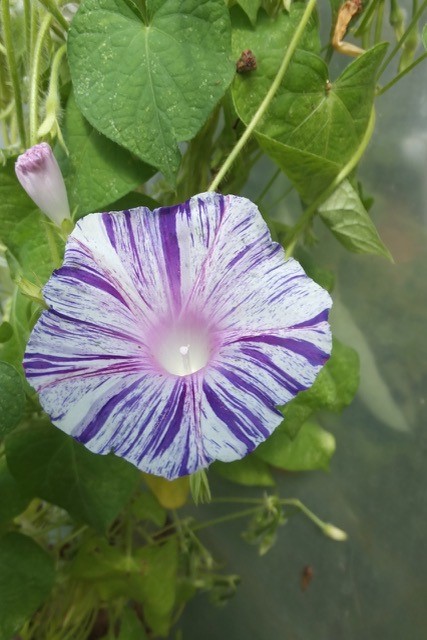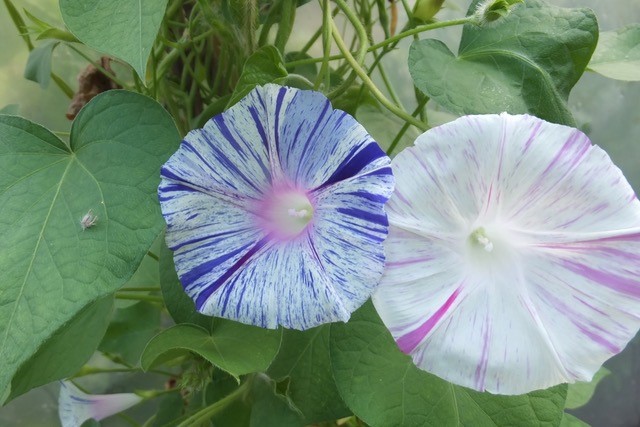
Ipomoea purpurea is another of those greenhouse flowers that annoyingly bloom from early morning to wither and fade after lunch. No problem if you’re retired or at leisure but if away during the working week you can only appreciate their full splendour at the weekend. And, as their common name Morning Glory suggests, only if you forego a late lay-in.
These tropical climbers are very closely related to Sweet potatoes, but are fast growing Annuals from seed. These can be remarkably lush and floriferous with large pastel trumpet like blooms replaced abundantly from dawn throughout the summer months.
Introduced from the Americas in the early Seventeenth century the common name was adopted from the remarkably similar, perennial and most unloved weed, Calystegia sepium a.k.a. Convolvulus / Bindweed. But don’t fret, Morning Glory’s both an annual and it isn’t hardy so it cannot cause similar problems.
Easy to grow you can choose seed for plants with blooms in pink, red, white, the original mauve, and shades to deep purple. Most blooms are striated with attractive patterning though one-colour varieties are also offered. (Though to be frank the plain white just looks so much like the damn Bindweed you may as well pot up a root of that!)
Start the seed individually in small pots in a propagator or warm light place and move on as the plants grow. Provide canes from the start so seedlings have something on which to cling. I set three plants apiece in large tubs with tripods of six foot canes. This is a minimum!

Morning Glory grows vigorously so keep well watered, generously fed, warm and bright. Ensure they’re well ventilated and cool. In hot dry conditions these can become prey to Red Spider mites though otherwise seldom suffer pests or diseases.
If you become intrigued by this genus there are a dozen or more other glasshouse species available, many similar in habit with flowers in other colour ranges. The Sweet potato as mentioned above has edible foliage as well as the roots and fewer, smaller but quite gorgeous blooms. From India comes Ipomoea / Merremia tuberosa, Wood-rose, with large leathery ‘flowers’ (the sepals of the fruits), once popular for decorations especially in Hawaii.


